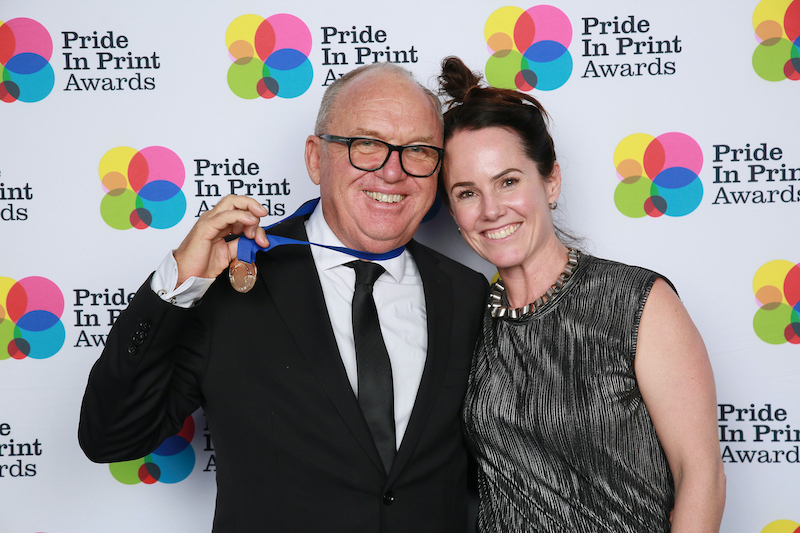 Laura Lynn Johnston
Laura Lynn Johnston
Buyer personas have becoming hugely important in B2B marketing, and it’s understandable why: you need to know who your audience is before you can create content that’s useful for them.
Defining your buyer personas needs to go far beyond analysing your current stats and the usual demographics discussion, which can only tell you a sliver of the story. People who have just purchased your product might be fun to talk to (they should be happy customers, after all), but learning from the people who chose your competitor instead can result in a much more valuable discussion. What are the concerns that caused them to believe that your company or the solutions you offer was not their best option?
Here are 3 of the most common perceived barriers that might have prevented them from seeing your ability to deliver the goods:
1. Lack of information
Thanks to the internet and the global supply chain, consumers have access to more buying options than ever before. But, if they don’t have enough details to inform their purchase, they’re unlikely to follow through.
Most buyers are trying to deal with the uncertainty and risks of making a bad choice. Is there the potential for conflict if they choose wrong? Is there enough perceived value to make it worth the risk? Are the consequences of their choice clear (and fair)?
Let’s say your business sells clothing online. If someone has never bought from you before, they don’t have any real world insight into your products or what it’s like to buy from you, so they probably have a lot of questions! Is this shirt going to fit me? Is the fabric stretchy enough that, if I fall between two sizes, I can size down? Will I be able to return it if it doesn’t fit? Is it going to cost me extra money to return it, and is someone going to give me a hard time if I try to? If a customer has to hand over their hard-earned cash before they can find the answer to these questions, they’re much more likely to buy something similar from a company who already has their trust than take the chance on you.
No matter what your product or service is, you need to put yourself into your buyer’s shoes and consider what you would want to know if you were faced with the same choice. Generate content that will provide those answers to new customers up front, either on you product/service page or compiled as a list of FAQs, to instil confidence in their purchasing decision and put those perceived risks to bed.
2. Competing interests or values
Keeping conscious of the values and interests that your buyers factor into decision-making can make a difference in discovering where your business has an edge over its competitors. What influences their choices about values, and how do these values influence their purchase decision?
Defining your brand story goes miles towards overcoming this barrier. Knowing who you brand is and what you stand for—and communicating it well through your content—will help you attract buyers whose values align with yours.
Keep in mind, though, that some of your values or interests may compete with your customers. More often than not, this comes down to dollars and cents. While of course you are a looking to make a profit (you are a business, after all), experimenting with introductory offers or tiered pricing models that appeal to a wider range of budgets can help bring new customers in the door. Everyone likes to feel like they are getting extra value while spending less. And, if you’ve got a great customer experience, letting someone dip their toe into it with less financial risk can show them upfront just how much value you have to offer.
3. Less than stellar prior experiences with your company (or one like it)
Studies show people base a huge part of their purchasing decision on customer reviews. While there are always two sides to every story, if you have unfavourable feedback on a public platform that has been left unaddressed, you can’t expect strangers to put in the effort to try and understand the bigger picture.
Whether or not you believe in the adage that ‘the customer is always right’, it is much cheaper to try and win someone back with a positive customer service interaction in response to an issue than it is to convert new brand customers. Create a process around addressing bad reviews, one that reflects your brand, its tone/language/voice, and what you stand for. Handling problems with the right grace and empathy can even have the power to turn unhappy customers into advocates.
Creating buyer personas, and content that supports them through every stage of their buyer’s journey, can be really challenging on your first try. We can help you define who your personas are and what they’re looking for you to provide. Get in touch with ICG to learn more.
Subscribe to Email Updates
Embracing the tangible power of print
Posted at 14/08/2023 10:37:51 AM
Molly Woppy and SCG: Partnering for Environmentally Friendly Packaging
Posted at 21/06/2023 10:29:22 AM
SCG bestowed with Sustainability Award
Posted at 27/06/2022 12:37:27 PM
Award winning print
Posted at 22/06/2022 5:14:32 PM
Soar Print and ICG have merged, creating Soar Communications Group (SCG)
Posted at 7/01/2022 12:02:59 AM
Award winning print
Posted at 22/06/2022 5:14:32 PM
Soar Print and ICG have merged, creating Soar Communications Group (SCG)
Posted at 7/01/2022 12:02:59 AM
SCG bestowed with Sustainability Award
Posted at 27/06/2022 12:37:27 PM
Embracing the tangible power of print
Posted at 14/08/2023 10:37:51 AM
Molly Woppy and SCG: Partnering for Environmentally Friendly Packaging
Posted at 21/06/2023 10:29:22 AM





